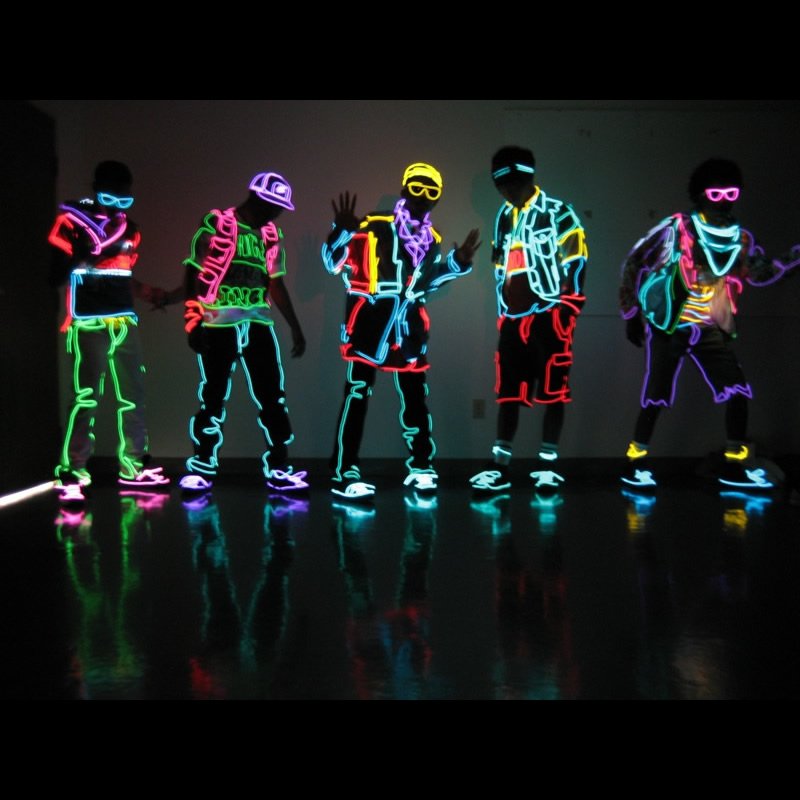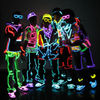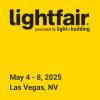Why I don't offer EL wire anymore*

This site has many pages describing past projects created with EL wire and EL flat panel materials. I retain these examples in the gallery to document the history of my design work, and to help explain the difference between LEDs and EL. Some vendors use these terms interchangeably (maybe for SEO/marketing reasons?) but they are not the same.
Electroluminescent (EL) wire is best known for producing a neon-like continuous line of light. It is flexible enough to be fashioned into delicate shapes, and can be sewn onto clothing. However, it has many limitations, and I used to spend a lot of time explaining why I did not recommend it for certain applications. Over the past several years, I’ve shifted my message from “I do not recommend EL” to “I do not offer EL, because I’d rather be working with RGB LEDs.” This post explains some of the other reasons behind this change.
noise/ safety concerns
EL requires a high voltage AC driver. You can receive a mild shock from the end of a piece of EL wire if the conductors are exposed. Many EL drivers emit a high-pitched whining sound, which is undesirable around microphones.
low brightness/ high power consumption
EL wire is much dimmer than most LED options, and it is difficult to make it visible in situations where it is competing with video screens or other stage lighting. You may be able to compensate by over-driving the wire, but that will shorten the lifetime of the material, and you’ll require much more power (so battery life will be shorter, or battery packs will need to be bigger).
limited lifetime
EL wire is fragile, and will break at locations that flex repeatedly. Garments with long runs of EL wire can be difficult to fold or transport. Our high-profile pieces for MIA and Daft Punk may give people the impression that covering an entire body with EL wire is a routine operation, but installations like that require very special care and handling, and are not intended to be used for an extended period of time. Durability can be improved by adding reinforcing materials, but there will be a tradeoff between stiffness/bulk and wearability.
Even without mechanical damage, EL wire will have a shorter lifetime relative to LEDs. The internal phosphor loses its glowing strength over time, and this aging is accelerated for EL wire that is exposed to sunlight or other UV sources.
aesthetics
The main benefit of using EL wire is that it creates a uniform line of light with a single color. Fiber optics with LED light sources can achieve a similar effect, and will be able to change color, although they will also be relatively dim.
We can create stripes and other shapes that are backlit with LEDs, which will be much brighter and more durable than EL wire. Some examples include this logo on a jacket, and stripes on sleeves of a jacket. These can be animated to have color changes along the length of a stripe.
Using newer technology, we can also create illuminated lines of light with very closely spaced RGB LED pixels, such as this spiral bra design.
* There are some exceptions where EL wire is the best choice for adding light to something, and I will consider these requests on a case-by-case basis. However, I do not maintain an inventory of EL wire or drivers, and that can affect the cost and lead time of a project.









